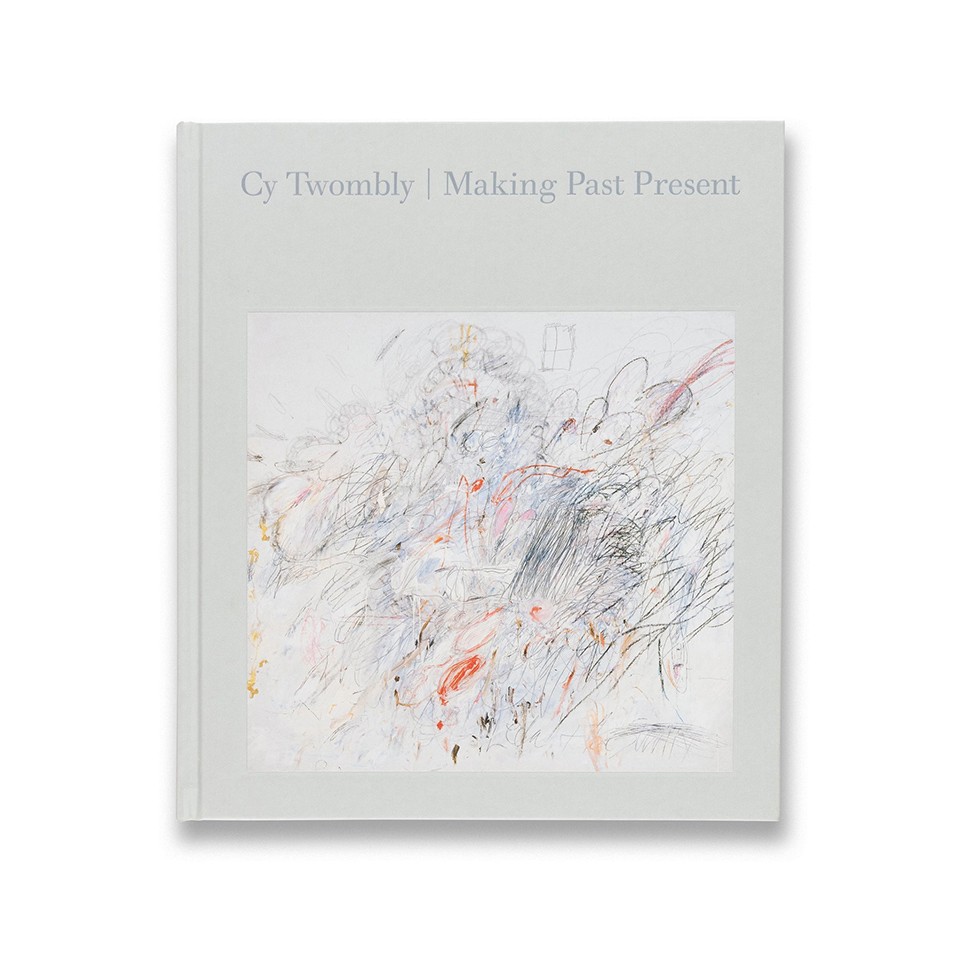

Cy Twombly: Making Past Present was published on the occasion of Twombly’s retrospective at the Museum of Fine Arts, Boston and the J. Paul Getty Museum. It includes essays by Christine Kondoleon, “Encountering the Ancient World” and “Color and Line, Gods and Poetry”; Mary Jacobus, “Akephalos/The Headless One”; Kate Nesin, “Mountains Transfixed, Memory Unfixed”; Jennifer R. Gross, “A Return to Sculpture”; Brooke Holmes, “The Time of Achilles,”; and Anne Carson, “A Rustle of Catullus.”
Kondoleon, one of the show’s two curators, offers an overview of Twombly’s historical investments and those associated with Rome specifically in her first essay. She glosses Twombly’s biography, connections to the MFA Boston, and obsessive collecting of antiquities. Artworks discussed include By the Ionian Sea (1988), The Wilder Shores of Love (1985), and Nine Discourses on Commodus (1963). Her second essay is divided into sections focusing on colors, inscriptions, and lines of poetry; names and epithets, with discussion of Virgil (1973) and Plato (A Painting in Two Parts) (1977); graphisms; sound and voice, with discussion of Charles Olson and Black Mountain College as well as works such as Orpheus (1979) and Thyrsis (1977); war and memorials, in relation to Homeric and Sapphic works; and Aphrodite and Venus in relation to Leaving Paphos Ringed with Waves (2009). Nesin, the show’s second curator, offers an extended reading of Blue Ridge Mountains Transfixed by a Roman Piazza (1962); given the relative scarcity of literature on this particular painting, it is indispensable for those researching it. She considers alongside Cnidian Venus (1966–67) and Epitaph (1960), and Twombly’s responses to landscapes.
Jacobus’s essay focuses on Apollonian and Orphic themes, Twombly’s engagement with Rainer Maria Rilke and Johann Wolfgang von Goethe, and military parallels for the artist’s chariot motif. Gross links sources of inspiration (e.g., George Gissing, Mark Twain, and William Wordsworth) to the artist’s autobiography and travels, discusses collages such as Plato (1974), and emphasizes the later period of Twombly’s sculptural practice (1976–2011), which followed a lengthy hiatus during which he produced no sculptures at all. She frames the collages and sculptures alike as seeking “ideal form” (190) and maintains a Platonic emphasis throughout. Holmes “put[s] Twombly’s antiquity in conversation with antiquities” (207), focusing on Fifty Days at Iliam (1978) through a detailed reading of Alexander Pope’s translation of the Iliad. Carson takes up Catullus, understanding the artist “fall[ing] in love with” with the poet (229) as a conduit for ephemerality and indirectness in his practice.
The volume will be useful to those interested in interdisciplinary approaches to Twombly’s practice, as it incorporates notable contributions from literary scholars (Jacobus) and Classicists (Holmes, Carson). Related literature includes Dominique Baqué’s Sous le signe d’Apollon et de Dyonisos (2016); Mary Jacobus, Reading Cy Twombly: Poetry in Paint (2016); and other major retrospective exhibition catalogues, e.g., Cy Twombly, ed. Kirk Varnedoe (1994) and Cy Twombly: Œuvres sur papier 1973–1977, Musée de Grenoble (2023).
(Publication description by Jamie Danis)
Published in 2020 on the occasion of the upcoming exhibition Cy Twombly: Making Past Present at The J. Paul Getty Museum, Los Angeles (August 2 – October 30, 2022), and at The Museum of Fine Arts, Boston (January 14 – May 7, 2023).
Cy Twombly: Making Past Present. Christine Kondoleon with Kate Nesin. With contributions by Anne Carson, Jennifer R. Gross, Brooke Holmes, and Mary Jacobus. Published by MFA Publications of The Museum of Fine Arts, Boston, 2020. 264 pages, fully illustrated. English.